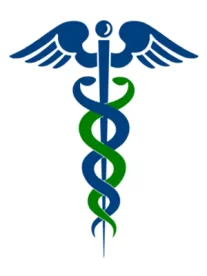On Friday, February 9, 2018, President Trump signed the Bipartisan Budget Act of 2018 (the “Budget”), a two-year budget which, in significant part, made substantial revisions to Medicare, including the Medicare Advantage (MA) program. Such revisions include:
i. the addition of non-medical services (e.g., home-delivered meals, transportation to and from a physician’s office, etc.) and telehealth services to the range of MA-covered services that an MA plan (Plan) can offer to its members;
ii. a significant increase in federal funding for services provided by federally qualified health centers (FQHCs);
iii. disbanding the Independent Payment Advisory Board (IPAB), a board comprised of presidential appointees whose sole authority and responsibility was to cut Medicare costs and expenses; and
iv. an increase in the discounts that pharmaceutical companies must give seniors enrolled in Medicare Part D drug plans by making the so-called “doughnut hole” disappear in 2019.
The above Medicare-related changes were part of the “Creating High-Quality Results and Outcomes Necessary to Improve Chronic (CHRONIC) Care Act of 2017” (the “Act”) – a bipartisan bill that passed the Senate last October and was incorporated into the Budget during the final throes of Budget negotiations.
The following includes a more in-depth discussion of each of the Budget items described above.
Extended Coverage for Services Under Medicare Advantage Plans – New Supplemental Benefits and Telehealth Benefits for MA Plans and ACOs
The Act contains various warmly-received modifications to the Medicare program including the addition of language that allows providers to have greater flexibility to care for their chronically ill patients. As a result of the Act’s provisions as incorporated into the Budget, the Act allows reimbursement of supplemental services provided by MA plans to chronically ill enrollees. Supplemental benefits are any benefits that have a reasonable expectation of improving or maintaining the health or overall function of a chronically ill patient. Supplemental benefits are not limited to being primarily health-related benefits, which allows MA plans to provide services such as transportation to and from a physician’s office or meal delivery services. Additionally, the Act will provide for reimbursement of telehealth services provided by MA plans and Accountable Care Organizations (ACOs) to attempt to extend the reach of health services to chronically ill patients.
Federally Qualified Health Centers
FQHCs are community-based health care providers that receive funds to provide primary care services in underserved areas. FQHCs include Community Health Centers, Migrant Health Centers, Healthcare for the Homeless, and Health Centers for Residents of Public Housing.
Under the new Budget, Community Health Centers will receive more than $7 billion in funding. These clinics, which serve 26 million people nationwide, lost funding last October and were relying on temporary funding through March 31, 2018. Many of these clinics could see an increase in patients resulting from recent CMS guidance allowing changes to Medicaid eligibility levels and work requirements. The additional funding in the recent Budget is critical to ensure that FQHCs can provide care to underserved populations.
The Budget also stalls mandatory cuts to Disproportionate Share Hospitals (DSHs), which were originally mandated by the Patient Protection and Affordable Care Act (ACA). Disproportionate Share Hospitals provide medical services for large numbers of Medicaid enrollees and uninsured patients. The ACA calls for a reduction in federal funding for DSHs each year, but the reductions have been delayed every year since the ACA’s passage. The Budget further delays the reductions to DSHs, giving providers access to critical resources to serve low-income individuals.
The Independent Payment Advisory Board
IPAB, created as part of the ACA, was intended to be a panel of experts tasked with controlling Medicare spending, although neither former President Obama nor President Trump nominated any members for IPAB. In theory, IPAB would recommend Medicare spending reductions to Congress if the five-year average growth rate in Medicare was projected to exceed the per capita target growth rate. In fact, Medicare costs never rose to the level required to trigger IPAB. The Budget eliminates IPAB entirely, though it is unclear exactly what effect this will have on controlling future Medicare costs.
Medicare Part D
Many Medicare Part D Prescription Drug Plans (Part D Plans) have a coverage gap, commonly referred to as a “donut hole.” For 2018, enrollees enter the coverage gap once the enrollee spends $3,750 on out-of-pocket expenses, like deductibles, coinsurance, and copayments for covered drugs. Enrollees that enter the coverage gap must foot the bill for a large percentage of prescription drug costs,[1] until the enrollee hits $5,000 in out-of-pocket expenses and qualifies for catastrophic coverage.
Under the ACA, the coverage gap would be gradually reduced until 2020, when enrollees in the coverage gap would be expected to pay 25% of the cost of prescription drugs while in the gap. The Budget accelerates closing the coverage gap to 2019, giving seniors who juggle many prescriptions relief one year earlier than expected.
Medicare Sequester
Originally enacted as part of the Budget Control Act in 2011, the Medicare sequester was designed to control Medicare costs by imposing a 2% cut in provider reimbursements under Medicare beginning on April 1, 2013. The sequester was scheduled to expire at the end of 2025, but the Budget extended sequestration through 2027. The continuation of the Medicare sequestration was not unexpected, but, for many providers, a 2% reduction in Medicare spending is cause for concern.
Key Takeaways
The Budget takes strides to increase federal funding for healthcare services for low-income individuals, and provide greater access to healthcare services for chronically ill patients. Additionally, the Budget attempts to control some healthcare costs by closing the coverage gap under Medicare Part D, and extending the 2% Medicare sequestration through 2027; however, eliminating IPAB may have unforeseen negative consequences should Medicare spending outpace projections in the coming years.
As with any Federal budget, there is a lot to unpack, and we will keep you updated on these, and other, changes to Medicare over the coming months.
[1] In 2018, enrollees must pay up to 35% of the cost of brand-name prescription drugs, and 44% of the cost of generic drugs.





 />i
/>i

